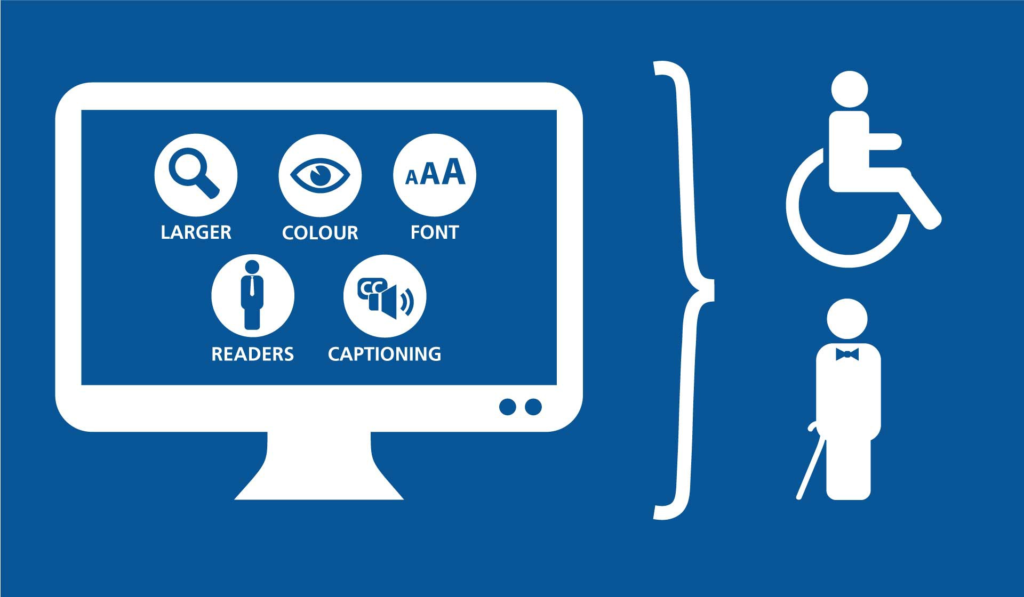Why Accessibility Matters More Than Ever in 2025

In today’s fast-paced digital world, websites are not just storefronts—they are often the primary way businesses connect with customers, clients, and communities. As more interactions shift online, the need for digital inclusion becomes critical. ADA compliance for website platforms is not just about checking boxes—it’s about making your digital presence functional and welcoming for everyone, including people with disabilities. Whether you operate an e-commerce site, a government portal, or a corporate brand hub, accessibility signals professionalism, trust, and legal responsibility. Businesses that prioritize inclusive design are better positioned to thrive in today’s regulatory landscape while building deeper relationships with their users.
Defining ADA Compliance for Website Success
ADA Compliance for website functionality means ensuring your online content and features are accessible to people with disabilities, in accordance with the Americans with Disabilities Act. The core standard used to measure this is the Web Content Accessibility Guidelines (WCAG), which outline how to make websites perceivable, operable, understandable, and robust. Achieving compliance requires a thorough review of content structure, navigation, color contrast, multimedia, forms, and compatibility with assistive technologies like screen readers. The goal is not to simplify or strip down design but to ensure that all users can access the same services, information, and functionality without barriers.
Legal and Financial Risks of Non-Compliance
One of the primary reasons businesses pursue ADA compliance for website projects is to reduce exposure to legal risk. Over the past several years, lawsuits involving inaccessible websites have skyrocketed. Companies of all sizes have faced demand letters, litigation, and court-ordered fixes due to digital platforms that failed to meet accessibility standards. These legal actions are often expensive and time-consuming, damaging both finances and brand reputation. Inaccessible websites also turn away users who could be loyal customers. A user who cannot complete a purchase, fill out a form, or read a menu due to accessibility issues will likely never return. Preventing this scenario begins with a proactive and well-documented compliance strategy.
Business Advantages of a Compliant Digital Experience
While legal protection is important, ADA compliance for website platforms brings significant business benefits that extend far beyond the courtroom. Accessible websites perform better across a range of metrics, from search engine rankings to conversion rates. Features that support accessibility—such as clear navigation, mobile responsiveness, and readable content—make websites more user-friendly for everyone. Elderly users, mobile users in low-visibility environments, and users with temporary impairments also benefit. Furthermore, a reputation for inclusivity can set your brand apart, especially in competitive industries where trust and ethics influence consumer behavior. When accessibility becomes a core part of your brand identity, it strengthens your long-term business value.
Implementing Accessibility in Your Workflow
Making your website compliant is not a single task—it’s an ongoing process that should be built into your design, development, and content workflows. This means engaging with accessibility experts, using accessible frameworks and design systems, and conducting regular audits. It also involves training your content creators and developers to understand how their choices affect accessibility. For instance, ensuring that all images include descriptive alt text, that links have meaningful labels, and that headings are properly nested for screen reader navigation. ADA compliance for website functionality is achieved through collaboration across teams, not isolated fixes. By building accessibility into your daily operations, you ensure long-term sustainability and avoid falling out of compliance over time.
Selecting the Right Tools and Partners
While automated tools can help identify some issues, they cannot replace human judgment and real-world testing. Manual audits, user testing with assistive technologies, and expert evaluations are essential to capturing the full picture. Working with a trusted accessibility partner can streamline the process and ensure you address both technical and experiential barriers. The right partner will provide detailed audit reports, practical remediation steps, and long-term strategies to maintain compliance. They will also support your internal team through education and documentation. Choosing an experienced accessibility consultant means you’re not only reacting to risk but building a digital presence designed to welcome and serve every user effectively.
FAQs
What is ADA compliance for website platforms?
It means making websites accessible to individuals with disabilities in accordance with the Americans with Disabilities Act by following WCAG guidelines to ensure usability for all.
Is ADA compliance legally required for all websites?
While not all websites are explicitly covered under the ADA, most business-facing and public service websites are expected to be accessible and can be subject to legal actions if not.
Can automated tools make a website compliant?
Automated tools can assist with some technical checks, but they miss many issues. Manual testing and expert audits are necessary to achieve full ADA compliance for website interfaces.
How long does it take to make a website compliant?
The timeline depends on the size and complexity of your website. A small site may take a few weeks, while larger platforms may need months for full auditing and remediation.
Does compliance affect design creativity?
Not at all. Accessibility encourages thoughtful, user-focused design that enhances usability without limiting creativity or visual appeal.
Conclusion
Making your digital platform accessible isn’t just about avoiding lawsuits—it’s about embracing a more inclusive, professional, and future-ready approach to digital engagement. ADA compliance for website development supports users of all abilities, strengthens your brand reputation, boosts SEO, and ensures your business can reach everyone. As regulations evolve and consumer expectations rise, there’s no better time to take action. Build a website that stands for accessibility, inclusion, and excellence. If you’re ready to start your journey toward compliance and better digital performance, Check Out Now and connect with a team that can guide your transformation with experience and precision.